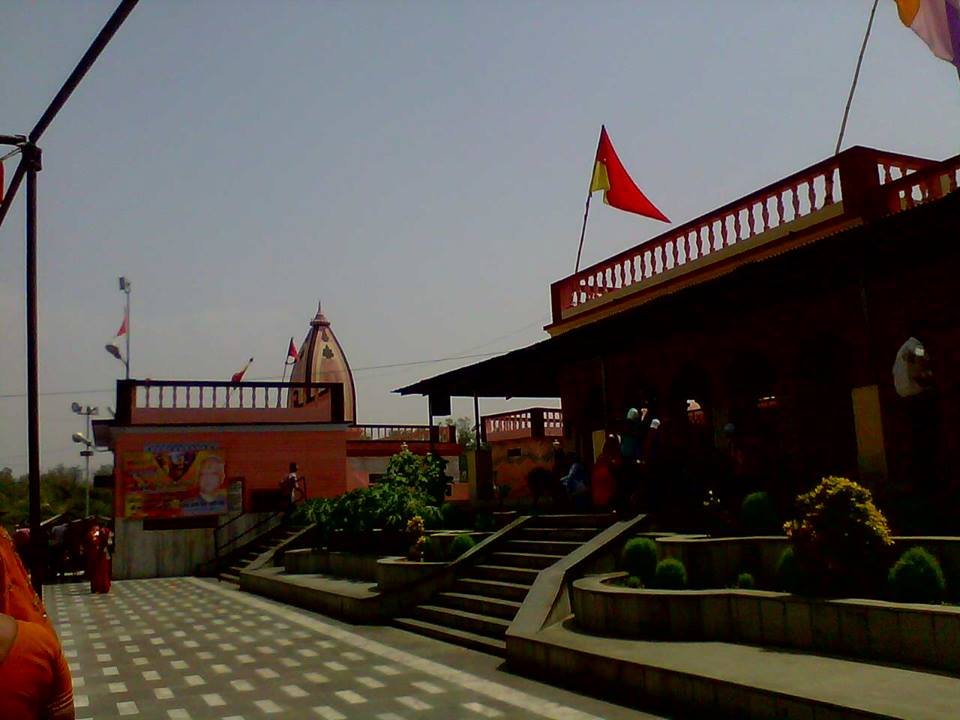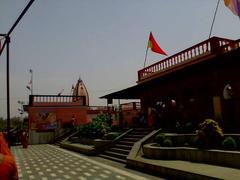
Visiting Hours, Tickets, and Historical Significance of Belha Devi Temple, Pratapgarh, Uttar Pradesh
Date: 16/08/2024
Introduction
Belha Devi Temple, located in Pratapgarh, Uttar Pradesh, is an iconic religious and cultural monument dedicated to the goddess Belha, a local manifestation of the Mother Goddess, Devi. Constructed between 1811 and 1815 by Raja Pratap Bahadur Singh of Awadh, this temple stands as a testament to the rich cultural heritage of the region (Wikipedia). Nestled on the scenic banks of the Sai River, the temple is not only a center of divine worship but also a significant symbol of Shaktism, the worship of the divine feminine, which has been a crucial part of Hindu tradition in northern India (Pratapgarh.nic.in). The temple has witnessed architectural evolution and cultural significance, transforming from a shrine where the deity was worshipped in the form of pindis to a marble bust that attracts thousands of devotees annually. This comprehensive guide aims to provide in-depth insights into the temple’s historical importance, visitor information, cultural activities, and nearby attractions.
Table of Contents
- Origins and Construction
- Historical Significance
- Patronage and Management
- Architectural Evolution
- Visitor Information
- Cultural and Religious Impact
- Archaeological Insights
- Modern-Day Relevance
- Nearby Attractions and Accessibility
- FAQ Section
- Conclusion
- Call to Action
Origins and Construction
The Belha Devi Temple, located in Pratapgarh, Uttar Pradesh, is a significant religious site dedicated to the goddess Belha, a local incarnation of the Devi or Mother Goddess. The present structure of the temple, which stands as a testament to the rich past of Pratapgarh, was constructed by Raja Pratap Bahadur Singh of Awadh between 1811 and 1815 (Wikipedia).
Historical Significance
The Belha Devi Temple is not just a place of worship but also a symbol of the enduring tradition of Shaktism in northern India. Shaktism, the worship of the divine feminine, has been a significant aspect of Hindu culture in this region. The temple’s location on the banks of the Sai River adds to its spiritual ambiance, making it a focal point for devotees from all over India (Pratapgarh.nic.in).
Patronage and Management
During its early years, the temple enjoyed the patronage of the Awadh State. The Raja of Pratapgarh appointed a pujari (priest) to oversee the worship and maintenance of the temple. After the merger of the princely state into the district, these pujaris became independent in managing the temple’s affairs. They have since maintained the temple and provided necessary facilities for visiting devotees, ensuring the temple’s condition improved over time (Wikipedia).
Architectural Evolution
Originally, the deity of Belha Devi was worshipped in the form of pindis (stone pebbles). However, in modern times, a marble bust of the deity was sculpted to give an attractive human form to the goddess. This change was made to enhance the visual appeal of the deity for the devotees. The goddess is now beautifully decorated with a crown and other ornaments, adding to the temple’s grandeur (Wikipedia).
Visitor Information
Visiting Hours and Ticket Prices
The temple is open to visitors from 6:00 AM to 8:00 PM daily. There are no entrance fees, making it accessible for all devotees. However, donations are welcome and contribute to the temple’s upkeep.
Best Times to Visit
The best times to visit the Belha Devi Temple are during the festival of Navaratri, which occurs twice a year, and during other significant Hindu festivals. These times offer a vibrant atmosphere with elaborate rituals and a large number of pilgrims.
Guided Tours and Photographic Spots
Guided tours are available upon request and can provide a deeper understanding of the temple’s history and significance. The temple grounds, with their scenic backdrop of the Sai River, offer excellent spots for photography.
Cultural and Religious Impact
The Belha Devi Temple has played a crucial role in sustaining the tradition of Shaktism in the region. The temple is a symbol of Hindu culture and faith, attracting thousands of devotees, especially during the Navaratra melas (festivals). These festivals are marked by elaborate rituals and a significant influx of pilgrims, highlighting the temple’s importance in the religious landscape of northern India (Awadh Darshan).
Archaeological Insights
Archaeological findings from the Uttar Pradesh region, where the Belha Devi Temple is located, provide valuable insights into the area’s history and culture. These findings span from prehistoric times to the recent past, shedding light on the continuous cultural evolution of the region. Despite the ravages of time, the Belha Devi Shrine remains a living testament to the enduring tradition of Shaktism (Wikipedia).
Modern-Day Relevance
Today, the Belha Devi Temple continues to be a vital religious site, drawing devotees from across the country. The temple’s management has ensured that it remains well-maintained, with proper arrangements for pilgrims, especially during major festivals. The temple’s significance is further underscored by its association with the city’s name, Bela Pratapgarh, which is derived from Maa Belha Devi (Pratapgarh.nic.in).
Nearby Attractions and Accessibility
While visiting the Belha Devi Temple, tourists can also explore other historical sites in Pratapgarh, such as the Kunda Palace and Patalpuri Temple. The temple is easily accessible by road and is a short drive from the Pratapgarh railway station.
FAQ Section
Q: What are the visiting hours of Belha Devi Temple?
A: The temple is open from 6:00 AM to 8:00 PM daily.
Q: How much are the tickets for Belha Devi Temple?
A: There are no entrance fees for visiting the temple.
Q: What is the best time to visit Belha Devi Temple?
A: The best times to visit are during the Navaratri festivals and other significant Hindu festivals.
Q: Are there guided tours available at Belha Devi Temple?
A: Yes, guided tours are available upon request.
Conclusion
Belha Devi Temple in Pratapgarh serves as a vibrant testament to the spiritual and cultural richness of northern India. From its origins in the early 19th century to its present-day significance as a major pilgrimage site, the temple has played a pivotal role in sustaining the tradition of Shaktism. The meticulous architectural evolution and the temple’s scenic location on the banks of the Sai River further enhance its spiritual ambiance. Visiting the temple during festivals like Navratri offers a unique cultural experience, with elaborate rituals and a considerable influx of pilgrims highlighting the temple’s importance (Awadh Darshan). Moreover, the temple’s modern-day relevance is underscored by the continuous efforts of its management to maintain the site, ensuring it remains an accessible and enriching experience for all visitors. By exploring the Belha Devi Temple and its surrounding attractions, one not only delves into a profound spiritual journey but also gains a deeper understanding of India’s diverse cultural heritage.
